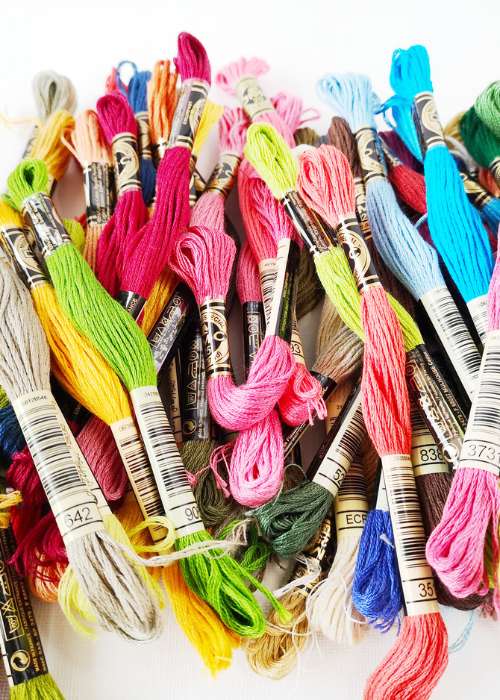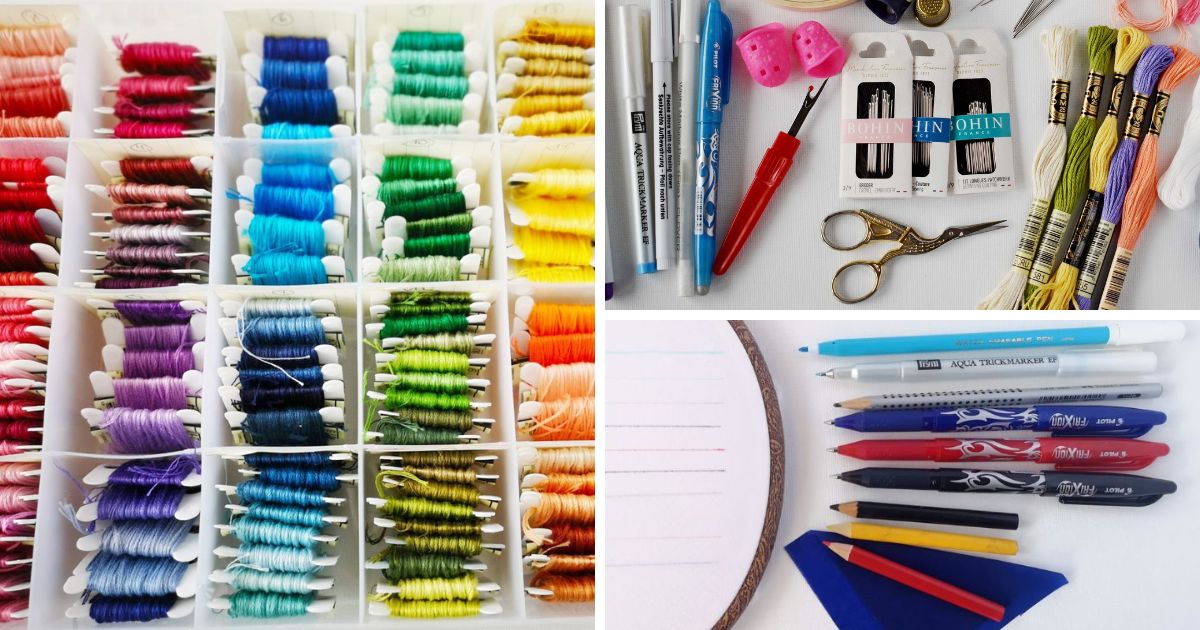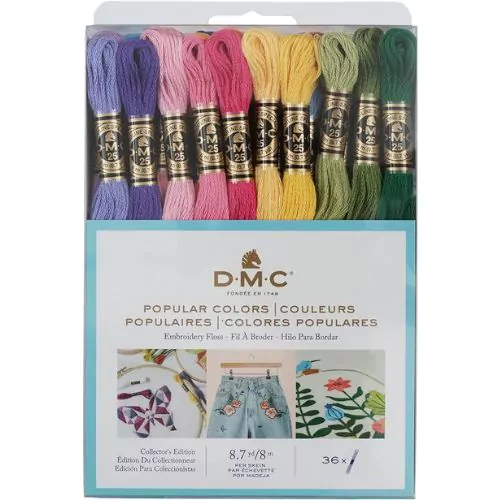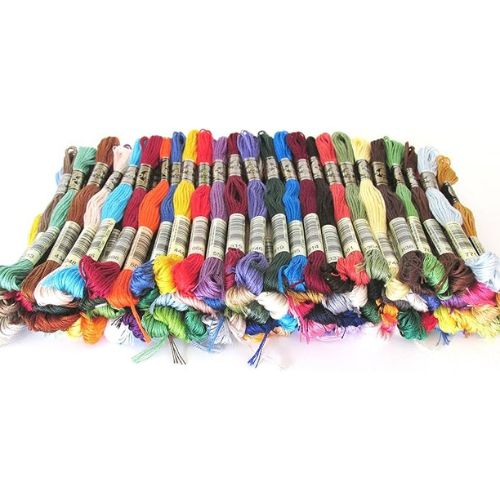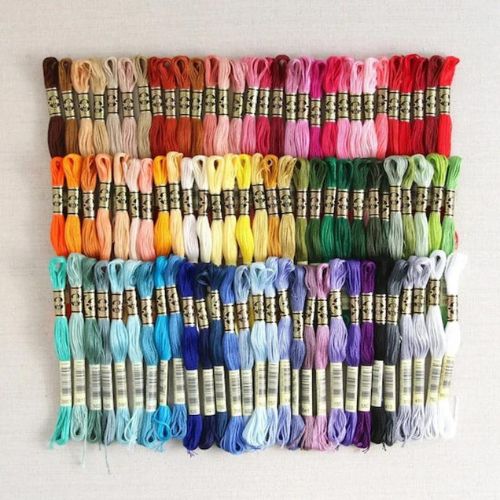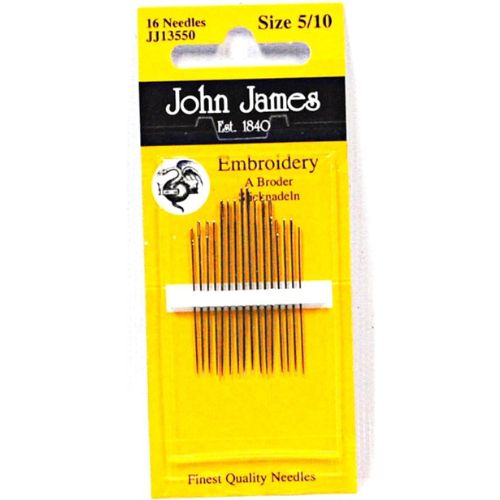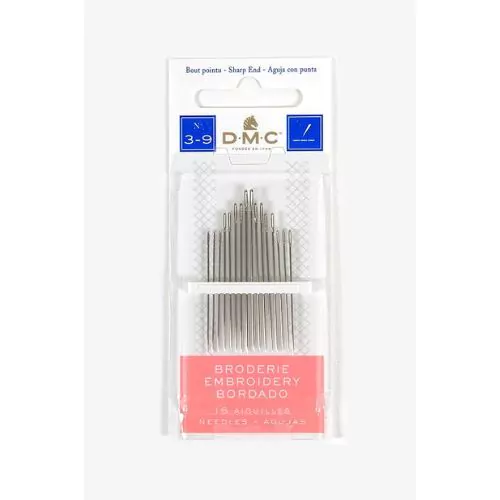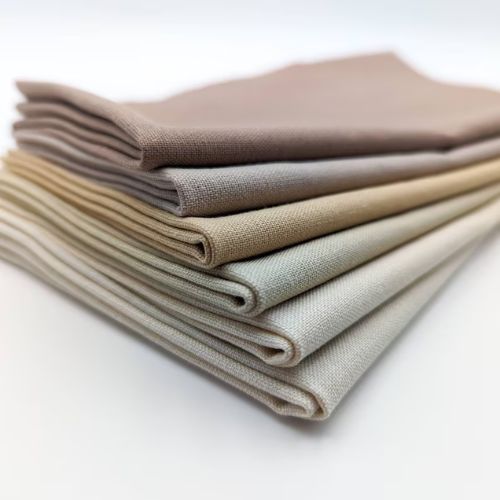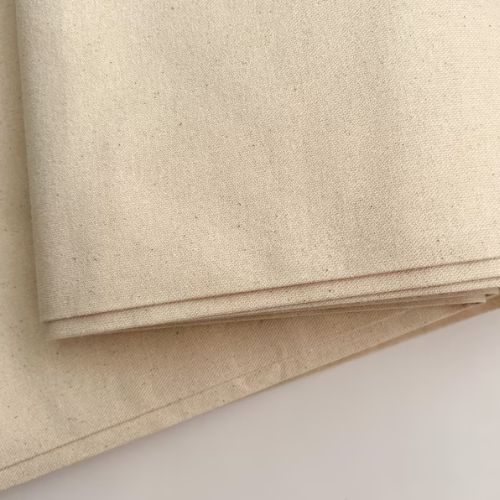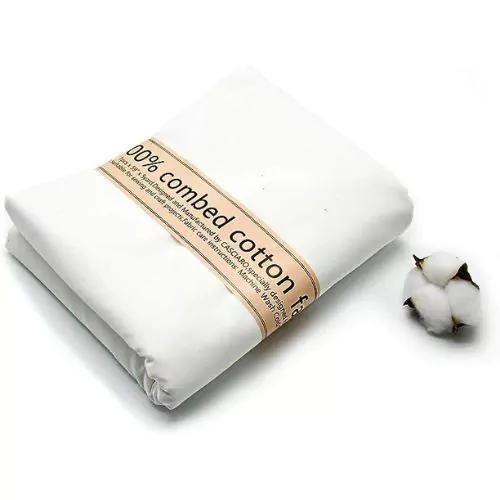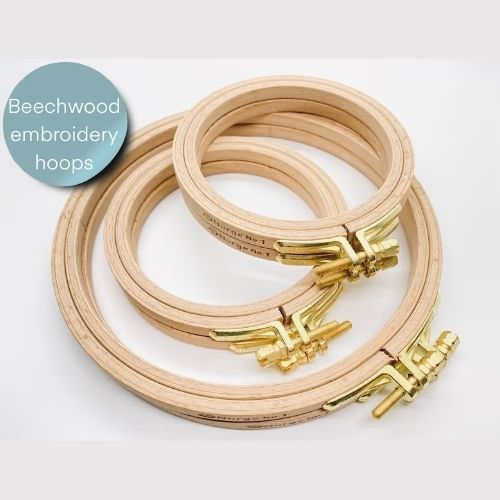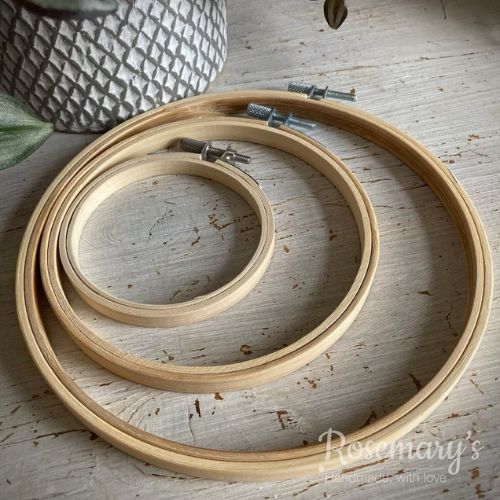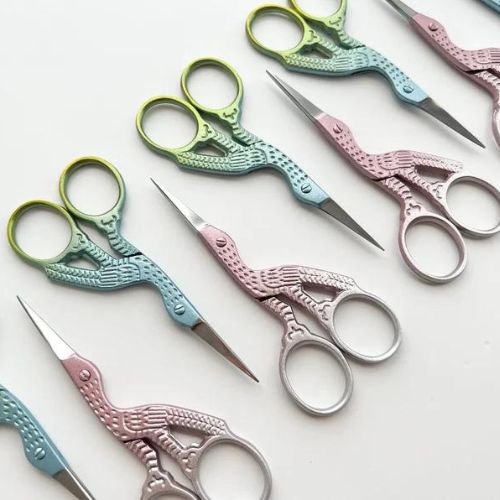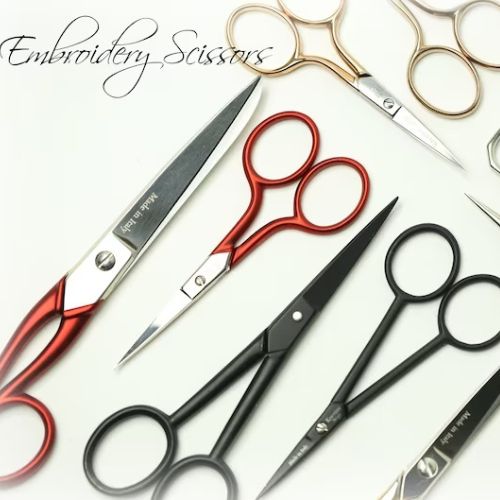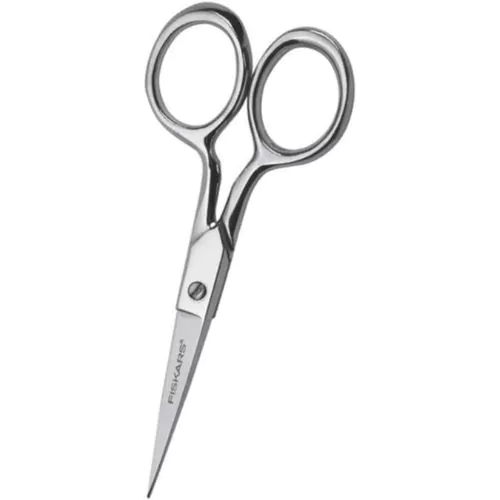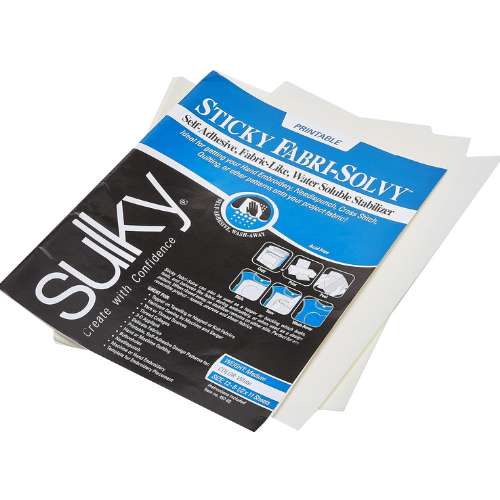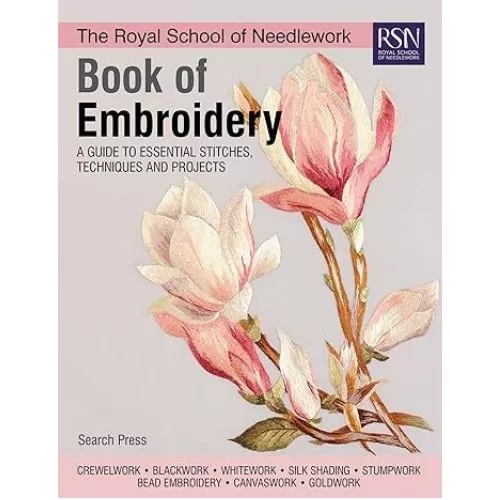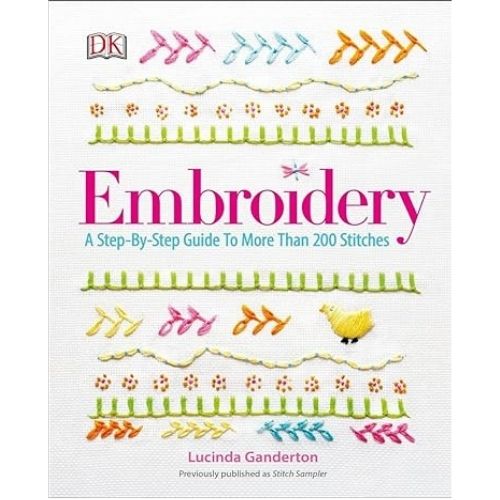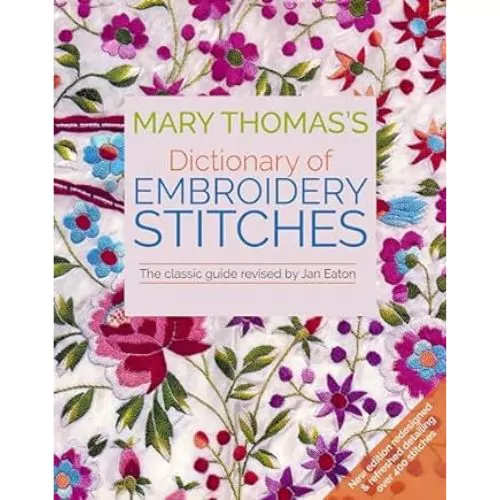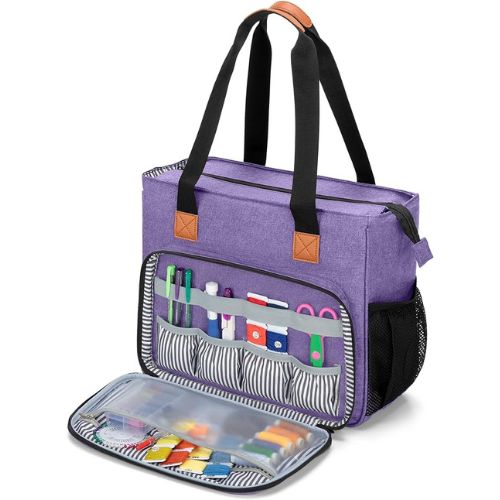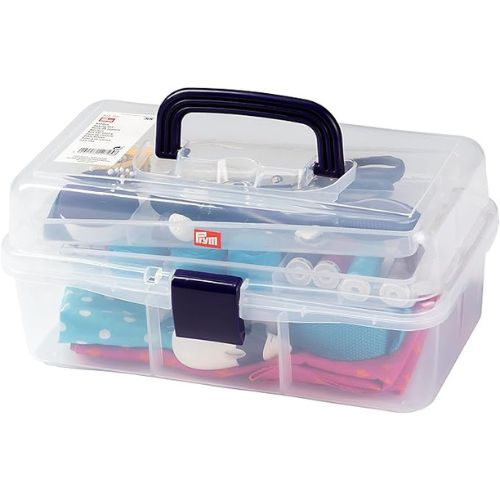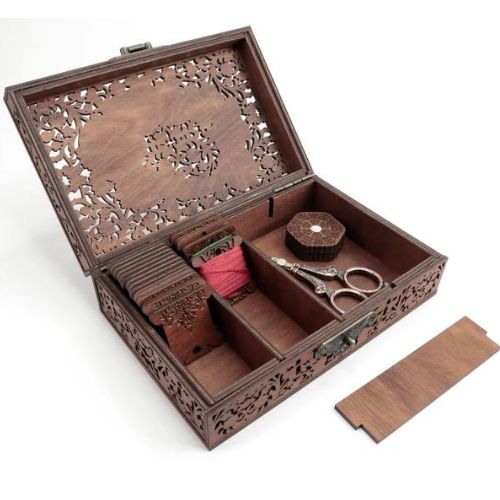Embroidery materials for beginners. All you need to start learning hand embroidery
Embroidery materials for beginners include essential tools, notions, and supplies to help you start your learning on the right foot. I shortlisted the must-have items every novice should possess to ensure a seamless introduction to the world of hand embroidery. Let’s explore these basic tools and materials together and kickstart your new hobby.
Disclaimer. To cover the cost of creating free embroidery patterns and video tutorials for this blog, I do sometimes link to products. Please assume these links are affiliate links. If you choose to buy through my links then THANK YOU – it will make it possible for me to keep doing this.
Embroidery Floss
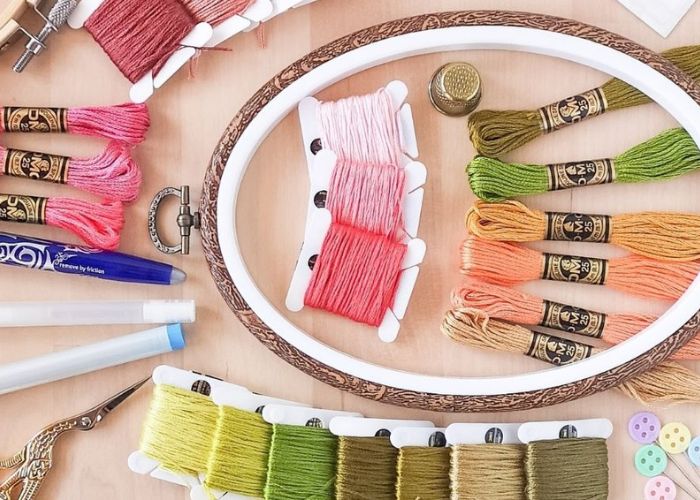
No embroidery is possible without the thread. Embroidery floss is a specialized thread created for hand embroidery. It is available in a wide range of colors and shades. Made from cotton, embroidery floss consists of six divisible strands, allowing the artist to adjust the thickness of the thread. For beginners, using embroidery floss helps to learn how to manage thread tension. Also, it provides an opportunity to experiment with different colors and shading techniques. Popular brands like DMC and Anchor offer high-quality, colorfast floss that’s easy to work with, making them ideal for novices.
Later, when you are more confident with your stitches, you can add other threads to your stash. Pearl cotton, silk, and wool are excellent for more advanced stitchers. If you want to dive deeper into the world of threads and floss, read this article – “Embroidery floss and threads. An in-depth guide to hand embroidery threads, floss, and other types of yarn you can use to embroider”.
To start learning hand embroidery, grab a floss pack in a color pallet you like, or choose separate skeins of the floss and create your own pallet. Here are some options:
Embroidery Needles
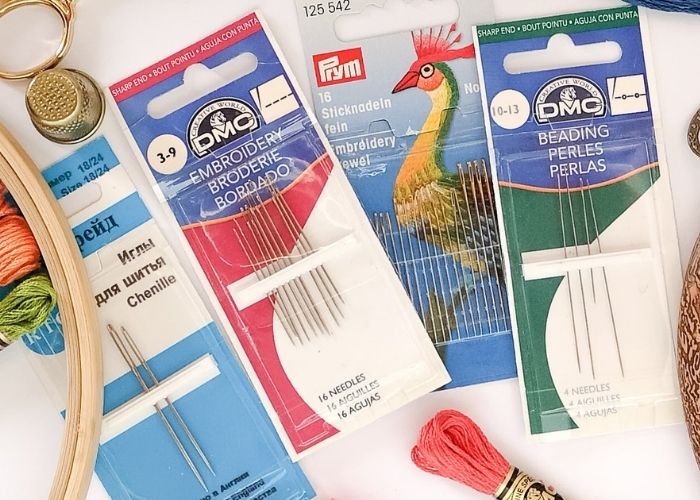
Unlike regular sewing needles, embroidery needles, often called crewel needles, have larger eyes for easy floss threading and a sharp point to pierce tightly woven fabric smoothly. The variety in sizes accommodates different fabric types and thread thicknesses. Beginners need these specialized needles to practice proper stitching techniques and ensure their embroidery looks neat and professional. Starting with a medium size, such as size 6 or 7, can be a good choice as it’s versatile enough for most projects.
Later on in your embroidery journey, you might need other specialized needles, like milliners for bullion knots or blunt cross-stitch needles for whipped stitches. The article “Hand embroidery needles and all you need to know to choose the right one” explains different types of needles and their uses.
The best-known brands of high-quality embroidery needles are Bohin, DMC, John James, Clover, Prym, and Tulip. Get a discovery pack with various sizes of needles to start with so you can try out different sizes and learn what fits best for you. Here are some options:
Fabric
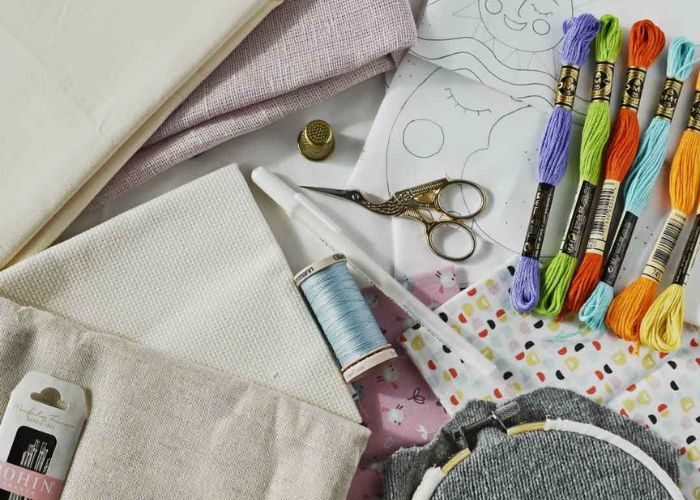
Fabric is the foundation of any embroidery project. The suitable fabric can significantly impact the final outcome. Beginners should start with medium-weight natural fabric with a tight weave (high thread count). Cotton fabric or cotton-linen blends are great to start with. Pure linens are usually more expensive, so you can leave them for later when you are more confident with your stitches. Also, I recommend starting with light-colored fabrics, as it is easier to transfer the pattern when the fabric is not dark.
When you shop for the fabric, consider having extra material for practicing stitches and techniques. This will allow you to experiment and make mistakes without the pressure of ruining a project. This freedom encourages learning and improvement, making practice fabric an invaluable resource for beginners. You can buy less costly fabric for practicing or use the fabric you might have at home. Old bed linens, flour sack towels, or denim shirts will work great as sampler fabrics.
To learn more about various fabric options – read the article “An in-depth guide to hand embroidery fabrics. Discover what is the best fabric for hand embroidery and why”.
Here are my fabric recommendations for beginners:
Embroidery Hoops
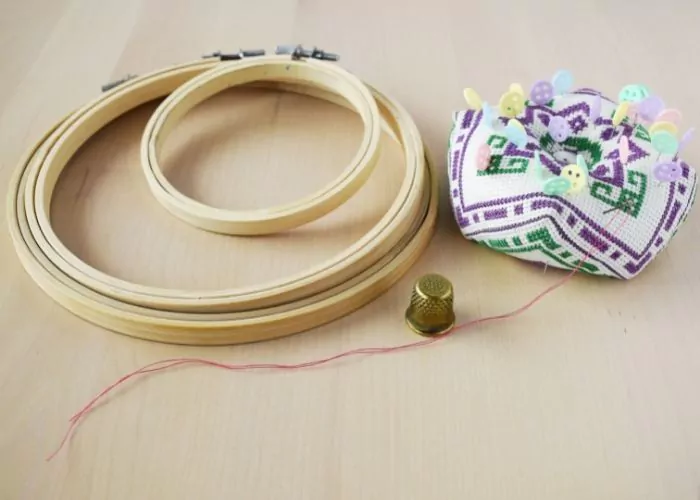
Hoops keep the fabric stretched tight and wrinkle-free, providing a stable base for stitching. This tension is crucial for creating even stitches and avoiding puckering in the fabric. Working with a hoop can significantly ease the learning process, helping beginners focus on the stitches rather than struggling with fabric management. Wooden or bamboo hoops are often recommended for beginners due to their lightweight nature and natural grip.
Later, you might want to get a hoop stand or frames to embroider with both hands. This article explains more about embroidery hoops: “Embroidery hoops. Types, sizes, and how to choose the best hoop for hand embroidery.”
My recommendations for beginners:
Scissors
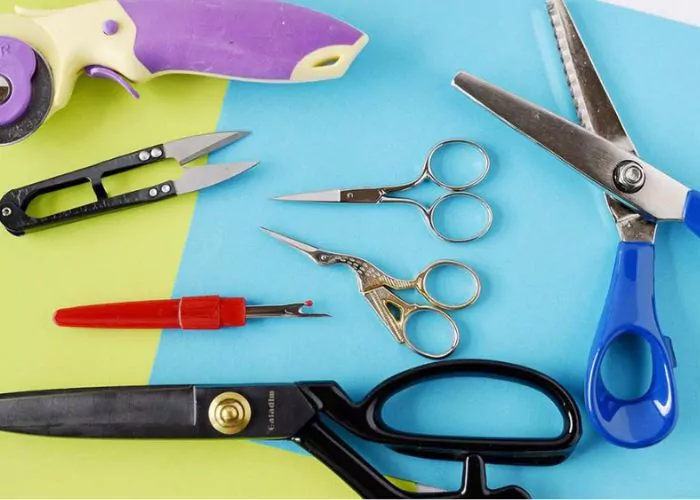
A good pair of sharp, pointed embroidery scissors is necessary for snipping thread precisely without fraying ends. For beginners, having a dedicated pair of scissors for embroidery ensures clean cuts. It prevents damage to the fabric or design.
There are plenty of options of scissors for hand embroidery you can choose from – from traditional stork scissors to vintage ones or extra cute mini snips. To learn more about the scissors you might need in the future, read the article “Scissors for hand embroidery.”
To start with embroidery, one pair of high-quality, small, sharp scissors is enough. Here are some options to consider:
Transfer Tools
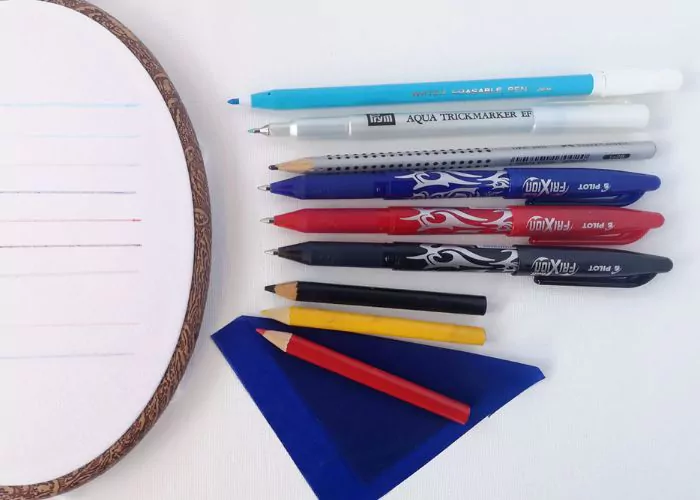
Transfer tools like water-soluble pens, friction pens, chalk pens, or transfer paper are vital for beginners to accurately replicate designs onto fabric. This helps practice specific stitches according to the design’s requirements and builds confidence in following and interpreting patterns – an essential skill in embroidery. Besides gathering pattern-transferring tools, you must learn some basic pattern-transferring methods.
My favorite options for pattern transfer on light-colored fabrics are the friction pen and the light box method. I like to use a combination of a water-soluble stabilizer and a water-soluble pen for dark fabrics.
Here are the tools I recommend for beginners:
These articles will answer all your questions about the pattern transferring:
- How to transfer embroidery pattern to the fabric
- How to transfer hand embroidery patterns – simple and inexpensive Lightbox method
- How to transfer embroidery pattern with tissue paper
- The ultimate guide to Water Soluble stabilizers for hand embroidery
- How to clean pattern transfer marks from fabric
- How to use Carbon paper to transfer embroidery patterns onto dark and light-colored fabrics
Instruction Book or Guide
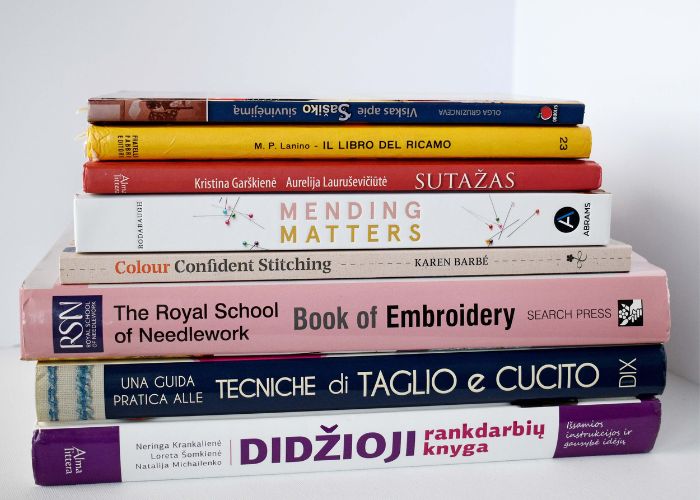
Access to a comprehensive instruction book or online tutorials provides beginners with a roadmap for learning various stitches and techniques. Understanding the basics of embroidery and having step-by-step guides can dramatically reduce the learning curve and improve overall skill.
Here are some learning options:
- Choose one of the embroidery projects with step-by-step tutorials and free pattern downloads on this blog.
- Watch video tutorials on the Practical Embroidery YouTube channel and learn embroidery one stitch at a time
- Enroll in a free online course to learn essential embroidery stitches.
- Learn from a book.
If you prefer to learn without digital distractions, here are the books I recommend for beginners:
The article “Best hand embroidery books: For reference, inspiration, and skill-building” contains more books that might inspire you to start a new hand embroidery project. Also, you can read a more detailed review of the “Book of Embroidery: A Guide To Essential Stitches, Techniques And Projects” by The Royal School of Needlework.
Storage
Keeping embroidery materials well organized and protected ensures they remain in good condition and are easy to find. Developing a storage system early on helps beginners maintain a clean and efficient workspace, making the embroidery experience more enjoyable and less frustrating.
To create a storage system that will work for you, consider whether you want to carry your supplies with you or prefer stationary storage options. Depending on that, create your own system and organize your embroidery supplies accordingly. You can dedicate a drawer or shelf of your wardrobe for these supplies or choose a nice box or a backpack to keep everything in one place.
Read the article “How to Organize Embroidery Floss and Thread: Practical Solutions for Busy Creatives” for some tips on how to store and manage your threads.
If you are just starting, small storage solutions might be the best. Take a look at these options:
Over To You
If you are determined to learn a new craft, starting with these embroidery materials for beginners and understanding their purposes will set a solid foundation for your stitching journey. High-quality tools and materials will allow you to focus on developing your skills and enjoying the creative process.
More about hand embroidery tools and materials:
- My favorite hand embroidery supplies, tools, and materials
- Hand embroidery needles
- Embroidery hoops
- Embroidery floss and threads
- Guide to hand embroidery fabrics
- Scissors for hand embroidery
- Water soluble stabilizers
- Carbon paper for pattern transfer
- Mending tools and materials
- Mini embroidery hoops
- Best hand embroidery books
- Embroidery materials for beginners


